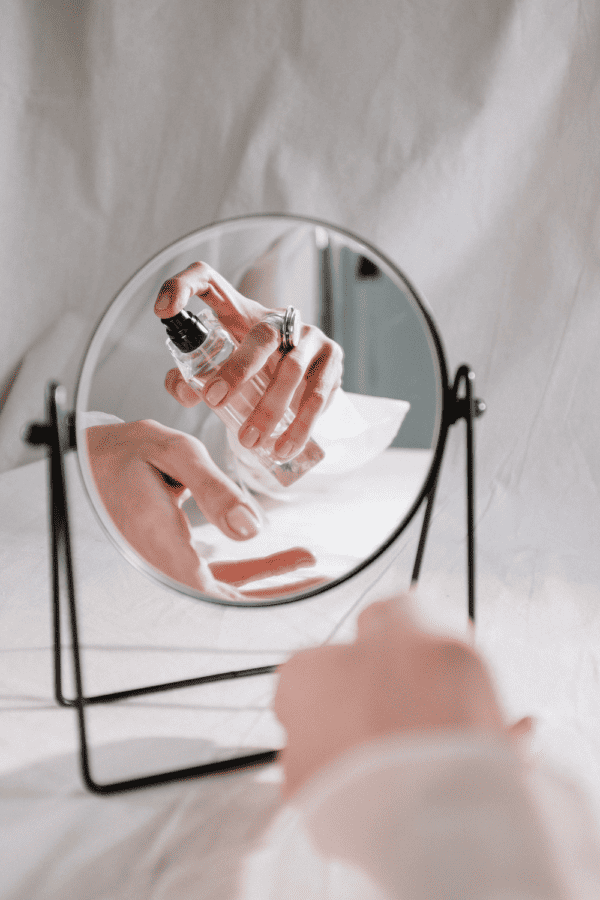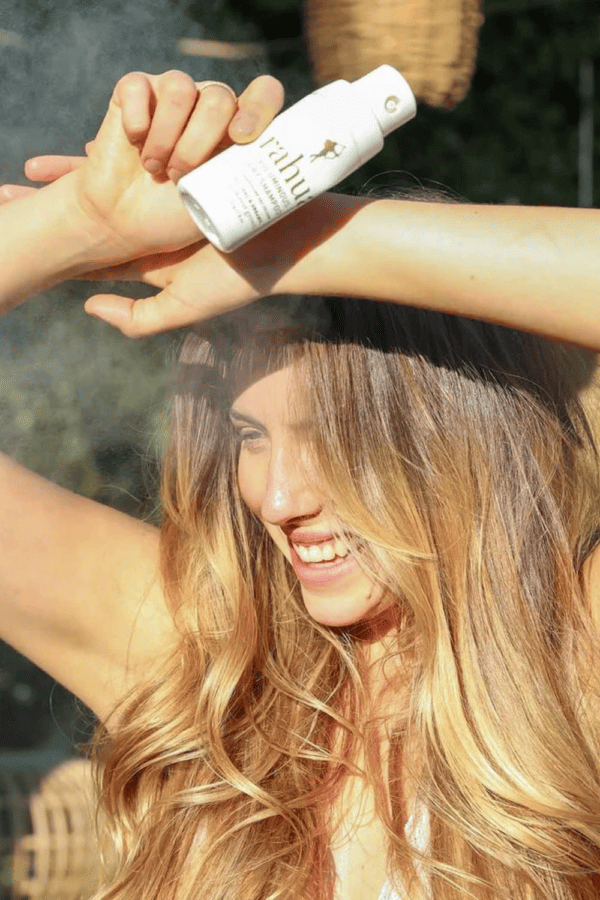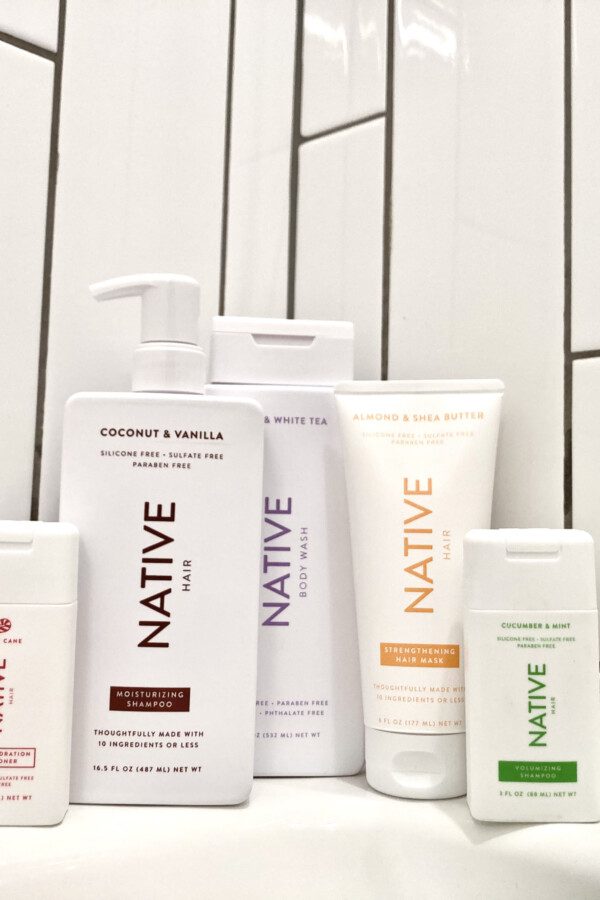If you’re a lover of the great outdoors, listen up! Chemicals in the waterproof coating of your rain jacket, shoes, and other outdoor gear may be poisoning you and the environment. Learn more about these toxic chemicals, what’s being done about them, and how best to minimize your exposure.
Table of Contents
This article contains affiliate links, which means we may earn a commission if you decide to make a purchase.
What Are PFAS?
Per- and polyfluoroalkyl substances (PFAS for short) are synthetic chemicals that are superb at repelling water, grease, and stains. For this reason, producers have been adding them to cookware, furniture, cosmetics, clothes, and even underwear since the 1940s.
Up until recently, it was common for outdoor gear manufacturers to add PFAS into the coatings on raincoats, tents, backpacks, shoes, and other recreational products to ensure breathable waterproofing. The coatings are supposed to work like “magic,” causing rainwater to bead up and roll right off the surface of gear rather than soaking through it (and making you drenched).
(Recent research, however, has suggested that at least in some contexts, PFAS may not actually work as well as they’re supposed to.)
Home
Here’s a List of Products with PFAS (& How to Avoid Them)
PFAS “forever chemicals” are in the news a lot these days. Here’s a list of products with PFAS to help you decrease your exposure.
How PFAS Threaten Nature and Your Health
The problem? That name-brand jacket that keeps you snug and dry on the trail—even on the wettest and windiest of days—may be leaching PFAS into the environment. And your bloodstream.
“They’re the best in that they’re very useful at keeping things dry, keeping grease out of things,” said biophysical chemist Arlene Blum in an interview with NPR. “But they’re the worst because… they never break down, and all of the ones that have been studied have been found to be harmful.”
According to the Centers for Disease Control and Prevention (CDC), PFAS such as perfluorooctane sulfonic acid (PFOS) and perfluorooctanoic acid (PFOA) “do not break down in the environment, can move through soils and contaminate drinking water sources, and build up (bioaccumulate) in fish and wildlife.”
(PFOS and PFOA are two of the most widely studied PFAS, but there are actually upwards of ~10,000 different ones. For practical purposes, it’s usually easiest to think about the entire class of PFAS chemicals, as opposed to focusing on individual ones. Although each specific kind of PFAS may vary slightly in its structure, they generally all act the same way in the body and wider environment.)
These chemicals wash off our gear, enter water systems, and spread rapidly through the environment, where they stick around—forever. Because of their persistence and widespread use, these aptly named “forever chemicals” circulate in the bloodstreams of most people alive today and have made their way into the remotest wilderness areas, including Mt. Everest.
Studies show that forever chemicals can affect human growth and development, thyroid and liver function, the immune system, and reproduction. They have also been linked to cancer. PFOA and PFOS in drinking water are more harmful than previously thought and toxic in very small doses according to a June 2022 health advisory issued by the EPA.
The Turning Point
Greenpeace launched its revolutionary Detox campaign in 2011 to highlight the global textile industry’s use of toxic chemicals such as PFAS. “If the fashion industry has the power to influence trends, then it also has the power to play a positive role in protecting the planet,” stated Greenpeace on its Detox website. The campaign mobilized “people power” and led to investigations, reports, and petitions, ultimately persuading dozens of companies to commit to detoxing their product lines.
Phasing out PFAS: Not as Easy as It Looks
Case Study 1: Fjällräven in Europe
European outdoor clothing company Fjällräven was among the first to phase out using forever chemicals, but it stumbled a few times along the way. Fjällräven officials were reportedly shocked to find forever chemicals in several items that were supposed to be PFAS-free. Cross contamination turned out to be the culprit: Fjällräven’s products had touched PFAS-containing material somewhere along the supply chain.
The most daunting task for companies, though, has been finding non-toxic waterproofing alternatives to forever chemicals. Like many other companies, Fjällräven had to consider the tradeoff between non-toxicity and performance. Ultimately, the company chose a non-toxic beeswax/paraffin mix that’s water resistant but probably not waterproof in a driving rain. “If you go through just what normal people do, going through a fog, going through a forest, walking the dog, it works very well,” said Fjällräven’s operating sustainability director Aiko Bode.
(As a side note, our Editor Abbie’s husband has a Fjällräven parka and he loves it! It’s a very high-quality coat and so far has held up great in wet environments.)
Case Study 2: US-Based Keen
Portland-based footwear and accessories company Keen took an innovative approach, realizing they could eliminate PFAS from products like shoelaces and sandals that did not need to be waterproof. “We eliminated nearly 70 percent of our use of this class of chemistry without making any other changes. Just by stopping using it where we don’t need it,” noted Keen senior director Chris Enlow.
For shoes that really did require waterproofing, Keen followed Greenpeace’s strict chemistry guidelines to develop non-toxic (or less toxic) PFAS-free formulations, field testing them in Oregon’s famously wet weather conditions. Eventually, the company settled on a few coatings that were not equal to the originals but still met performance standards. “The new, PFC/PFAS-free solutions we found meet our standards around water and dirt. Not spaghetti sauce,” said Chris.
All Keen shoes made before 2018 have had zero intentionally added PFAS.
Recent Milestones
By the early 2020s, companies were all over the place when it came to using PFAS. Fjällräven, Keen, Jack Wolfskin, Vaude, and a handful of other companies had gone completely PFAS free. Companies like Patagonia had begun using “short chain” PFAS, which are technically considered “less toxic” but are still far from safe.
Other companies stuck by the tried-and-true forever chemicals, refusing to compromise on performance. But the clock was ticking on PFAS, as regulation was underway.
The Netherlands, Germany, Denmark, Sweden, and Norway took the first formal step towards a European ban on PFAS by jointly submitting a restriction proposal to the European Chemicals Agency on January 13, 2023. In the US, several states introduced regulations banning the use of forever chemicals in consumer products and apparel. California, Maine, Washington, and New York are leading the charge, with bans set to be enforced as early as 2025.
Meanwhile, the industry response to public pressure and policy change has been gaining momentum. Outdoor retail giant REI announced it would ban PFAS in all product lines starting in February 2024. More companies announced plans to phase out PFAS in the coming years, including Canada Goose, Columbia Sportswear, Cotopaxi, Patagonia, Lululemon, L.L. Bean, Dicks, and others.
For the last holdouts—companies with no plans to stop using PFAS—the writing is on the wall. Whether it’s to save face, appease customers, or comply with regulations, all companies must eventually do their part to stop using these toxic chemicals in their manufacturing processes. It’s just a matter of time.
What You Can Do as a Consumer
To some extent, forever chemicals are indeed with us forever. But there are still things you can do as a consumer to minimize your exposure to PFAS.
- Buy your outdoor gear from an exclusively PFAS-free company.
- Avoid buying products that use Gore-Tex or eVent.
- You may want to use a PFAS-free spray such as one from Nikwax or Proof+ by Detrapel to waterproof your gear, however, be aware that the formulas used by these brands are “proprietary,” so it’s not entirely clear what they’re using instead of PFAS. A more natural alternative is a natural waterproofing wax such as Otterwax.
- Shop for products with alternative fabrics and coatings such as Nikwax DWR, Sympatex membranes or membranes made of polyurethane (PU). While PU can’t be considered a 100% “non-toxic” material, when it comes to water-resistant performance, it’s definitely a better option than PFAS.
Wardrobe
7 PFAS-Free Outdoor Brands (Boots, Backpacks, Tents)
Don’t let the waterproof coatings on your hiking boots, pack, or tent poison you or the environment. Check out these PFAS-free brands the next time you need new outdoor gear.
In addition to choosing your outdoor gear carefully, there are things you can do to minimize PFAS exposure in other areas of your life as well, like:
- Avoiding non-stick cookware (i.e. Teflon).
- Drinking filtered water.
- Skipping carpet treatments like Scotchgard.
To learn more about current legislation related to PFAS, Green Science Policy posts regular updates. It also maintains an updated list of PFAS-free companies and products.






